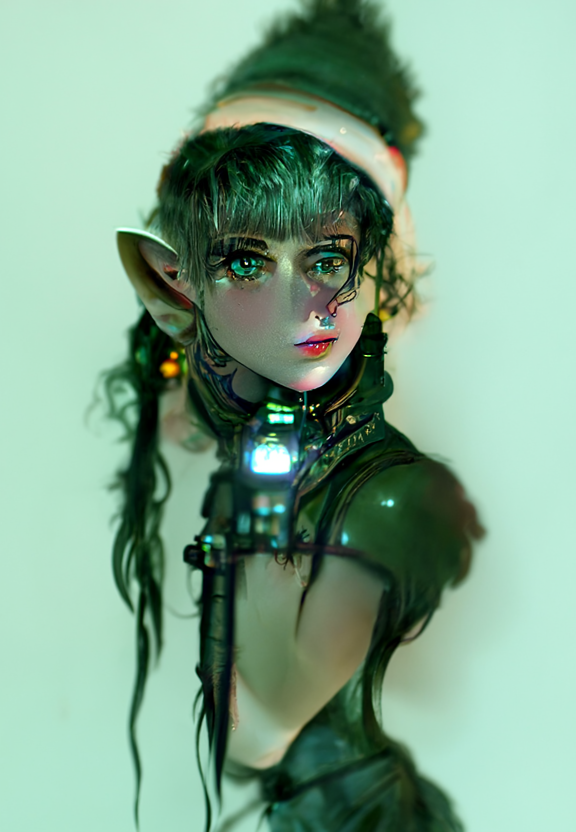I have come to think of the guided diffusion AI as a visual equivalent of the Library of Babel. Given enough renders, some of them would be perfect, attractive human faces, but you might have to run a prompt a million times before you hit one, and mostly the best you can hope for is “It was the best of times, it was the blurst of times.”.
These aren’t too bad, I think. Here are
Cyberpunk Elf Gibson Girl | full-length portrait | hyperdetailed colored pencil drawing
And
Cyberpunk Elf Gibson Girl | full-length portrait | hyperrealism | volumetric lighting | photorealistic | diorama
Here is what I got (the only difference is I took the Cyberpunk Elf Gibson Girl | full-length portrait | hyperdetailed colored pencil drawing and added some of the keywords as separate prompts, so in addition to the original prompt there was also “cyberpunk elf girl”, “elf girl”, “Gibson Girl”, “full-length portrait”
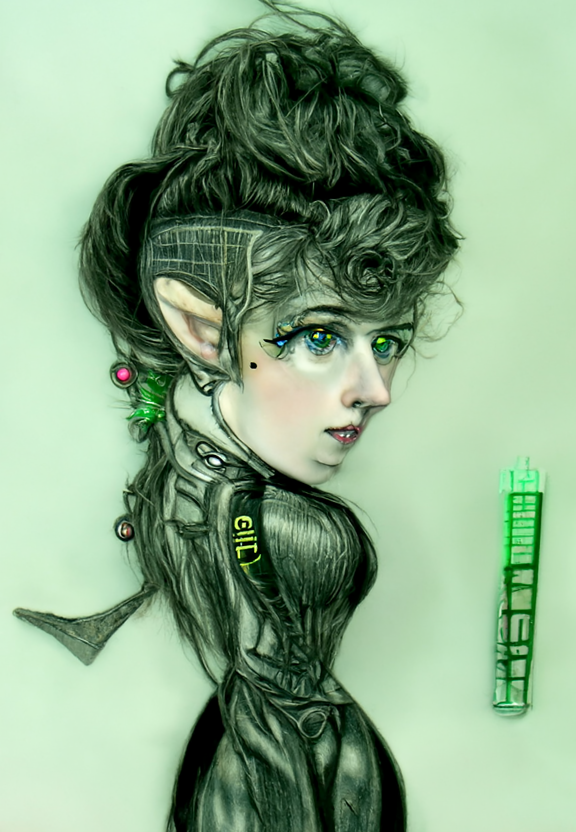
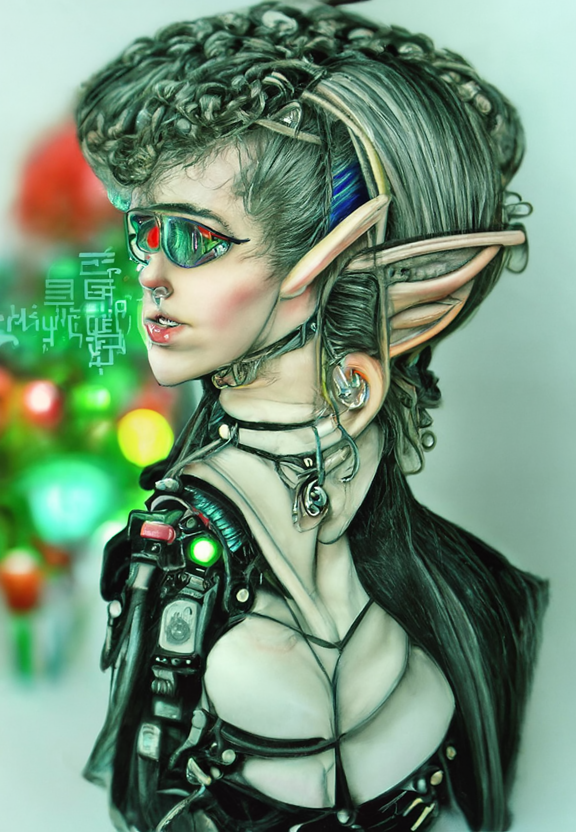
Elves have three breasts, right?
Here’s a question: iiandyii had a set that he made of a city , say he wrote a boor or two about it … could he use the pics he made or does he have to have permission or are there even guidelines for doing so atm ?
Of course he can do whatever he wants with his own pics. Unless he started out with someone else’s (copyrighted) picture and subsequently modified it, then it might get complicated. There are precedents (also think of Campbell’s Soup art or objets trouvés or the use of samples in electronic music or ape selfies) but I don’t know what they are and in what jurisdictions, so in that case he’d better consult a lawyer.
But the question is, are they his own pics? Is he the creator of the artwork, or the programmers of the AI? Or possibly even the AI itself? If the AI draws too heavily from identifiable pictures in its training library, does that make the new image a derivative work? I can’t imagine there’s much legal precedent, here, and I could see the arguments going either way.
Night Cafe at least tries to help out with
Pure speculation on my part here, but just because you use a software tool (say, Adobe Photoshop) as part of your technical process does not grant the programmers any rights. Also, algorithms cannot be patented or anything like that.
As for the training data, your and my, and any artist’s, training data includes lots of copyrighted images; so what?
btw in the monkey selfie case, I believe it was ruled that a monkey does not enjoy copyright protection?
If you tell me (or NightCafe) to draw a still life, then I (or NightCafe) will draw on knowledge of all of the many still lifes I’ve seen, and will produce a work that’s influenced by many different works, but no one of them to any great degree. Everyone agrees that that’s OK.
But if you tell me (or NightCafe) to reproduce one specific work, and I (or NightCafe) try to reproduce that single specific work as closely as I can, then that’s probably a copy of that work, and not allowed without the copyright owner’s permission.
If I put in a prompt like “Mona Lisa”, NightCafe will give me something that’s recognizably a copy of Leonardo’s famous painting. It won’t be a very accurate copy, but that’s just because the AI isn’t very good at it: It’ll still be the closest copy that it can come up with.
I’ve been playing around with that green-for-red noise file:
Not only does the AI know what an onsen is, it creates really nice images, especially if you specify that it is near Fuji or there is a mountainous landscape. I tried adding people and it was bad.
“Hot springs resort” was less impressive. Here is Toulouse-Lautrec
Here is Canaletto. (I like that it seems to be at the base of an active volcano, and the border effect that I didn’t actually request.)
It kinda recognizes tilt-shift as a style but doesn’t quite get there. Maybe if I try different prompts…
I duplicated your image with the same everything, and got this. The AI knows “waifu”, though. The first one turned out particularly well, I think, with the wink (first time I’ve seen a wink) masking asymmetry.
That and bokeh are listed options. You could try bokeh.
Changed up the prompts and got a reasonable tilt-shift diner.
Looks like it’s been raining.
And it has 7 likes, so not everyone thought it was bad.
https://creator.nightcafe.studio/creation/wQBSAcXlgPC9jcWanrdT
I had also tried putting yokai in there, but that didn’t work well either (though I did like that one yokai was on fire).
Today I tried adding Dan Witz and Zdzisław Beksiński to the mix and got much better results.
Summary
Yokai parade in onsen near Fuji | 8k resolution | hyperrealism | volumetric lighting | photorealistic | mountain landscape | postcard | style of Dan Witz and Zdzisław Beksiński
With “Mona Lisa” added as a prompt:
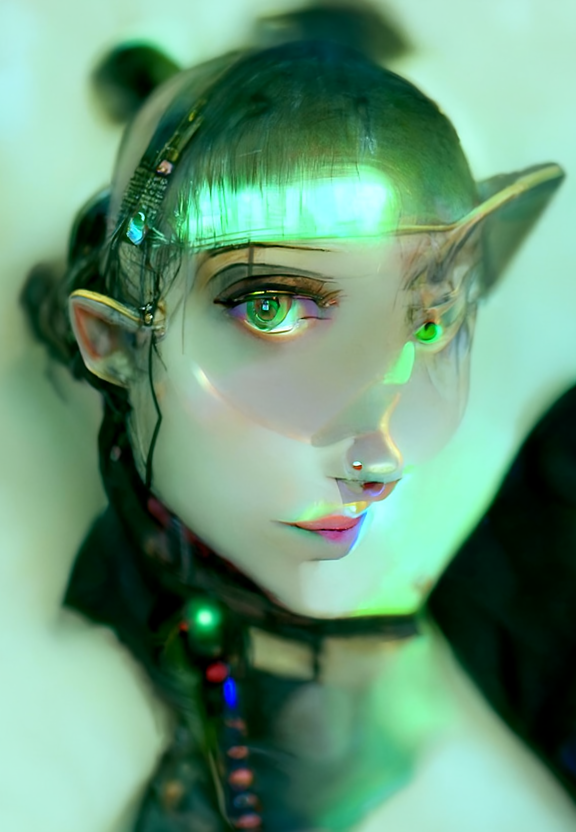
No Mona Lisa but with “symmetry loss” activated (seems to screw everything up, not sure how to use it)
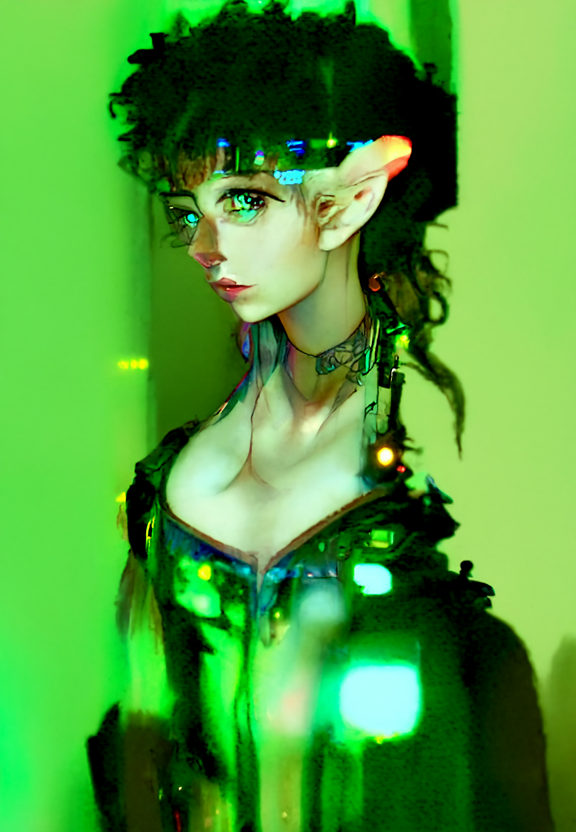
I mentioned several days back that the Russian superresolution AI that I found was better than most but not quite as good as Night Cafe or Imglarger using my test image. More recently I generated an image I especially like of a crowded bus station with an aurora over it. I didn’t upscale the original on Night Cafe, but I did try it upscaled by 4x on both Imglarger and the Russian AI. In this case, the Russian AI created more interesting, granular details in the aurora than Imglarger.
Imglarger provides 8x upscaling only for paying subscribers, but the Russian AI provides it for free, so I upscaled the original by 8x there. That resulted in much of the granular detail I liked in the 4x being smoothed away. So I then tried upscaling the 4x by 2x, and that gave better results than the direct path.
(I could have then tried upscaling the 8x by 8x to 250 megapixels, but besides being crazy I already found that the program crashes from out of memory errors well before that.)
Here are the Russian 4x of the entire image and a comparison of a smaller area.









